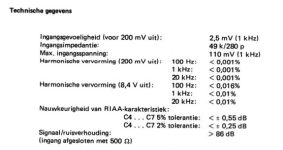The moving-magnet Supra 2.0, especially the one with LT1028's, is an ultrahigh current noise design made by people who don't understand a damn about noise optimization. Replace the LT1028's with low-noise FET op-amps and it becomes a very decent design.
I pointed that out to Elektor right after they published it (but more politely phrased). They even replied that they would publish my comment, but they never did.
I pointed that out to Elektor right after they published it (but more politely phrased). They even replied that they would publish my comment, but they never did.
Last edited:
Hi all,
Some time ago I also decided to make a Supra 2.0. I had some problems getting this phono preamp up and running. The problem was the LT1028M, not the AM, as the pcb uses a smd package. I had a high DC voltage at the Op Amp output of about 8-12V. The same problem was when I used an AD797B. At that time I didn't use the DC voltage control on the input of the amplifier because I forgot about these elements while making an order in Mouser, even making a short to ground didn't help. After analysis, I found that Op Amp JFETs would work better here because the source (MM cartridge) is 1kohm and the advantages of LT1028, AD797 are not used here. I used ADA4627-1 and all the problems disappeared.
Some time ago I also decided to make a Supra 2.0. I had some problems getting this phono preamp up and running. The problem was the LT1028M, not the AM, as the pcb uses a smd package. I had a high DC voltage at the Op Amp output of about 8-12V. The same problem was when I used an AD797B. At that time I didn't use the DC voltage control on the input of the amplifier because I forgot about these elements while making an order in Mouser, even making a short to ground didn't help. After analysis, I found that Op Amp JFETs would work better here because the source (MM cartridge) is 1kohm and the advantages of LT1028, AD797 are not used here. I used ADA4627-1 and all the problems disappeared.
Attachments
Because of its huge inductance, a moving-magnet cartridge is effectively a lot more than 1 kohm. See "Noise and moving-magnet cartridges", Electronics World October 2003, pages 38...43, https://worldradiohistory.com/UK/Wireless-World/00s/Electronics-World-2003-10-S-OCR.pdf Mind you, Electronics World drew one of the sections of the gain switch in the wrong state in figure 5 and I mixed up the terms spectral density and power spectral density.
ADA4627-1 is an excellent choice if you can get it to fit on the PCB. The thread starter's PCB seems to use DIP packages.
ADA4627-1 is an excellent choice if you can get it to fit on the PCB. The thread starter's PCB seems to use DIP packages.
If anyone is interested in my PCB version, I have 3 more pieces, I can send them after covering the shipping costs. When I ordered a PCB board, the minimum quantity was 5 pieces and now the rest of the PCB boards are left. All my documentation is on EasyEDA and I can share it. I think I still have 22nF 1% Wima capacitors, I don't remember the name of the series, but they are for audio.
so decided to build another project as a direct comparison to see if something is better
Well, is it?
Because of its huge inductance, a moving-magnet cartridge is effectively a lot more than 1 kohm. See "Noise and moving-magnet cartridges", Electronics World October 2003, pages 38...43, https://worldradiohistory.com/UK/Wireless-World/00s/Electronics-World-2003-10-S-OCR.pdf Mind you, Electronics World drew one of the sections of the gain switch in the wrong state in figure 5 and I mixed up the terms spectral density and power spectral density.
ADA4627-1 is an excellent choice if you can get it to fit on the PCB. The thread starter's PCB seems to use DIP packages.
AD797 LT1028 and ADA4627-1 are single amplifiers with standard SOIC_N 8 pinouts. However, they have extremely different input parameters, noise voltage and noise current. For MC (2-20 ohm) phono cartridges, AD797 and LT1028 are good, for MM (400 - 1K ohm) ADA4627-1 and other low noise, low bias current, JFET operational amplifier are good.
Noise-wise reasonably well: its input stages are biased at a somewhat higher current than is optimal for MM, but it's not too bad. The other specs look pretty good and it works in class A, so that is very audiophile.
What is the actual size of this pcb ?
NJM2068 is a surprisingly good chip noticeably better then 5532.
I was going to use a dual chip design but single chip sounds so good.
S/n somewhere around 85db.
OPA2134 will be tested.
I was going to use a dual chip design but single chip sounds so good.
S/n somewhere around 85db.
OPA2134 will be tested.
- Home
- Source & Line
- Analog Line Level
- My New Preamp Supra 2.0

